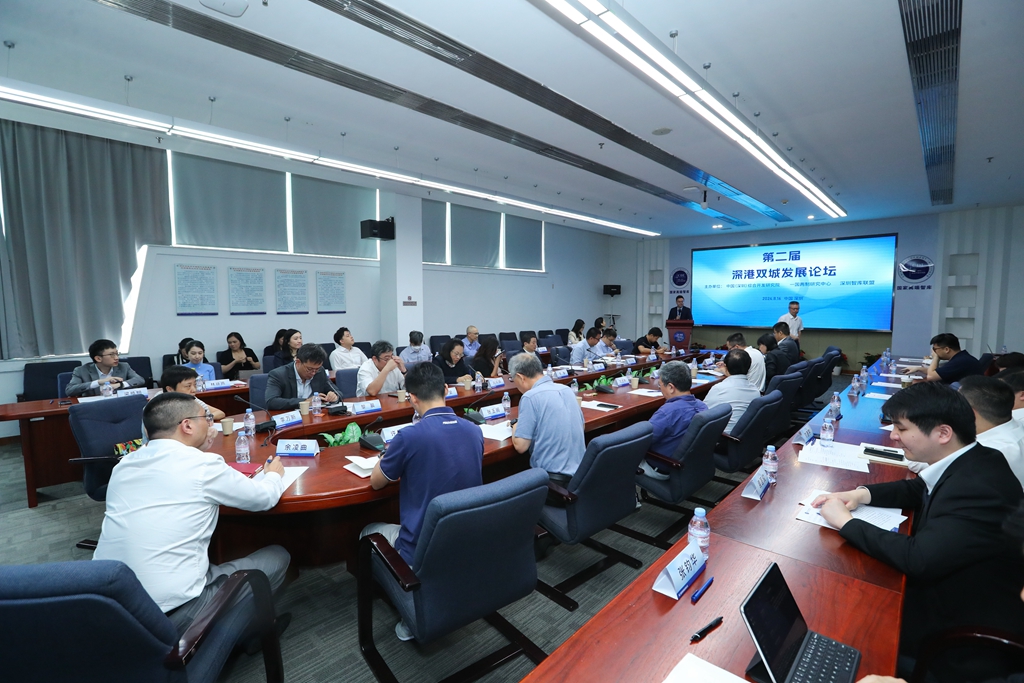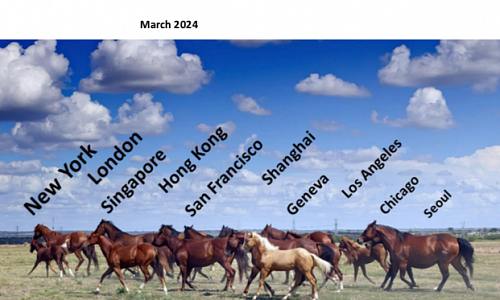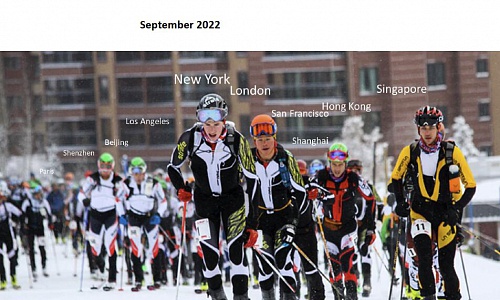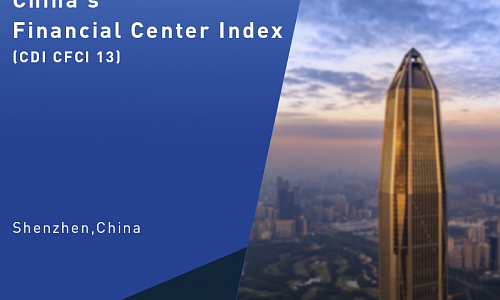The Long Journey of Chinese Culture to Reach the World

Date: August 27, 2024
Author: Mr. MING Liang, Research Fellow, Institute of Urbanization, CDI
In 2024, the Chinese AAA game Black Myth: Wukong debuted spectacularly, swiftly becoming a trending topic and a "top influencer." Inspired by the Chinese literary classic Journey to the West, this game has indeed created a “black myth,” achieving dual success in both critical acclaim and sales. The wide-ranging discussions it has sparked primarily revolve around the following three aspects:
1.Black Myth: Wukong Sets a Benchmark for High-Quality AAA Games in China
Domestic developers rarely ventured into AAA game territory owing to high costs, lengthy development cycles, and competitive threats. The launch of Black Myth: Wukong has altered this landscape. The game has gained widespread acclaim from players both domestically and internationally due to its top-notch character design, narrative structure, special effects, scene rendering, and voice acting. It has not only dominated sales charts in many countries and regions but has also become the first Chinese game to break into Steam’s top ten concurrent player rankings, ushering in a new era for China's gaming industry in the international arena.
2.Black Myth: Wukong’s Creative Team Embodies Both Idealism and Pragmatism
This monumental game was not created by a major corporation but rather the culmination of six years of dedicated effort by a small-to-medium tech company. The team balanced their aspiration to develop high-quality single-player games with the need for financial stability, which was provided by revenue from mobile game ventures. They achieved collaborative synergy by forming project teams in both the Guangdong-Hongkong-Macao Greater Bay Area and the Yangtze River Delta, bringing “Wukong’s black myth” to life.
3.Black Myth: Wukong Offers Fresh Perspectives on the Next Wave of “Cultural Export”
Video games are not just cultural carriers but also powerful channels for dissemination. The creators of Black Myth: Wukong seamlessly blended the “81 tribulations” from Journey to the West into the gameplay while digitally reconstructing 31 iconic landmarks from 12 provinces and cities across China with meticulous 1:1 accuracy. These endeavors vividly showcase the charm of traditional Chinese landscapes and the elegance of Oriental aesthetics, offering international players a rich and immersive experience of Chinese culture that transcends the story.
Beyond its Achievements: Reflections and Lessons
1.International Competition in Gaming is a Grueling Long Game
Similar to Wukong’s journey through the “81 tribulations,” the gaming industry demands constant innovation and refinement to maintain player engagement and loyalty. The game has achieved a remarkable debut, but the road ahead is challenging. Competing with global frontrunners requires extraordinary creativity, substantial investment, and continuous product optimization with operational excellence. While the game’s creators have received significant acclaim, they have also acknowledged criticisms, indicating areas for improvement. The considerable scrutiny and lofty expectations associated with the game serve as a “Sword of Damocles” over the team, signifying that this is only the “first level” of their journey. Many more “demons and monsters” lie in wait, making the journey ahead as arduous as it is promising.
2.Games, as a Vital Component of “Cultural Export,” Must Work in Tandem with Other Channels
As a blend of technology and creativity, Black Myth: Wukong offers a visually and audibly compelling introduction to Chinese culture. However, it still falls short of promoting regular and effective cross-cultural interactions. From the perspective of international communication practices, “cultural export” is a long-term, systematic endeavor that necessitates leveraging various cultural carriers and channels to establish a massive, effective matrix. Among these, the popularity of learning Chinese as a second language serves as a key indicator. As global interest in Chinese cultural symbols grows, the emergence of Chinese language education as a trend will be crucial in this new wave of “cultural export.” Nevertheless, “cultural export” has already set sail; the journey westward is poised to reach its destination.
3.Social Attributes of Games Call for a Balance of Multiple Factors
As a form of entertainment that encourages emotional and psychological engagement, video games not only generate substantial economic and commercial value but are also inherently constrained by laws, policies, cultural traditions, and ethical norms of different countries. As a unique cultural industry, the gaming sector has its own strengths and shortcomings. Policymakers should refrain from both excessive suppression and short-sighted “rush tactics.” Instead, they must strike an optimal balance between economic, social, and cultural dimensions.
Integrated Healthcare and Elderly Care: A Pressing Challenge Amid Population Aging

Date: September 13, 2024
Author: Dr. LIU Jie, Senior Research Fellow at CDI
In 2021, China transitioned to a moderately aging society, with the aging process set to accelerate, posing increasing challenges to healthcare and elderly care. The rapid aging phenomenon is marked by three key features:
- Trend: China’s aging population is poised to join the “fast lane.”
- Structure: The proportion of the very elderly population is steadily increasing.
- Features: Issues related to chronic diseases and disabled older adults are becoming more pronounced.
The China Population Aging Development Trend Forecast Report indicates that China will reach critical milestones in the acceleration of aging between 2035 and 2050, with the older adult population projected to peak in 2053. From 2021 to 2035, the older adult population is expected to increase from 300 million to 400 million, representing an accelerated growth rate. Simultaneously, the proportion of extremely old individuals (aged 80 and above) will continue to climb, accompanied by a sharp increase in the number of individuals with chronic conditions and disabilities.
Establishing a suitable integrated healthcare and elderly care service system has emerged as an urgent priority.
Insufficient Supply: Several integrated care models are still in their nascent stages. Nationwide, only 7,800 qualified institutions provide a total of 2 million beds, significantly insufficient to meet the massive demand. Rehabilitation hospitals and elderly care facilities often possess insufficient medical capabilities, and the medical support for home-based and community care is also inadequate.
Healthcare Payment Gaps: Existing medical payment systems fail to effectively support long-term hospitalization and rehabilitation for older adults, resulting in frequent transfers between facilities or significant out-of-pocket expenses.
Family Care Burden: The caregiving burden for families of disabled and cognitively impaired older adults is increasing annually. With the increase in the aging population and the decline in birth rates, many families struggle with the exorbitant costs of professional care.
Limited Long-Term Care Insurance Coverage: Although the number of pilot cities for long-term care insurance has expanded to 49, only approximately 1.34 million individuals get coverage, falling far short of the demand for disability care.
Addressing these challenges necessitates the development of a robust integrated healthcare and elderly care system.
1.Expand Integrated Healthcare and Elderly Care Services
To address the dual needs of healthcare and elderly care, resources must be coordinated to provide services tailored to demand, encompassing disease treatment, chronic disease management, postoperative rehabilitation, and long-term care. This entails:
Encouraging underutilized hospitals and medical institutions to transition into integrated care providers.
Implementing healthcare reimbursement policies in eligible elderly care facilities and promoting the development of medical services within these institutions.
Enhancing home-based and community care by augmenting the medical capabilities of community health centers, expanding the availability of family beds, and gradually strengthening the capacity of primary healthcare institutions to deliver in-home services for older adults.
2.Transition Secondary and Lower-Tier Hospitals to Integrated Care Facilities
Only 10% of hospitals in China are tertiary-level facilities, while secondary and lower-tier hospitals often struggle with operational difficulties and fail to meet the treatment, rehabilitation, and care needs of an aging society. Transforming these hospitals into integrated healthcare and elderly care facilities is essential. A referral mechanism should be implemented, enabling treatment-oriented hospitals to transition patients to rehabilitation hospitals, integrated care facilities, or elderly care institutions as part of a tiered medical system.
3.Achieve Universal Coverage of Long-Term Care Insurance
The coverage of social security-based long-term care insurance must be expanded, together with improvements in funding mechanisms and benefit guarantees, to ensure a government safety net. Additionally, commercial insurance companies should be encouraged to participate in pilot programs by offering personalized long-term care insurance products with tax incentives for buyers. By integrating insurance with care services, commercial insurers can help enhance the development of the care service system.
4.Expand Hospice Care Pilot Programs
Efforts should be undertaken to increase the number of hospice care facilities and strengthen the training of relevant medical staff. A bed-day payment model combining healthcare reimbursement and personal contributions should be investigated to meet the needs of terminally ill patients.
With the acceleration of China’s aging society, the integration of healthcare and elderly care will be vital in addressing the challenges posed by population aging to safeguard the well-being of older adults.
A Fresh Start for Platform Economy in China

Date: September 15, 2024
Author: Dr. CAO Zhongxiong, Assistant President of CDI, and the Director of the Digital Strategy and Economic Research Center
China's platform economy has evolved through distinct stages, transitioning from unchecked growth to a phase of well-regulated governance and innovative development. Over time, this process has cultivated a group of leading platform enterprises. The last three years have been pivotal, signifying a period of significant transformation. Initially driven by the rapid rise of the "Internet Plus" initiative, platform enterprises expanded into traditional industries, often being equated with e-commerce companies by the public. However, as digital technology increasingly integrates with the real economy, platform enterprises are now venturing into emerging fields such as technological innovation, driving their businesses to new depths.
Consider Alibaba as a prime example. In the last three years, the company has significantly increased its investment in areas such as AI-driven large language models. Its proprietary “Tongyi” model has secured a leading position in the global open-source large-model landscape. Alibaba has also facilitated the development of next-generation models by leveraging its own computational power and technical capabilities. This evolution demonstrates a shift: platform enterprises are no longer merely commercial entities but are increasingly positioning themselves as digital enterprises. As pioneers of the digital economy, platform enterprises are leveraging digital technologies to drive supply-side reform, stimulate consumption, streamline supply chains, promote dual circulation (domestic and international), and foster flexible employment, transforming themselves into comprehensive integrators of digital technology application and advancement.
Although Alibaba’s journey began in e-commerce, it has progressively evolved into a frontrunner in China’s technological innovation. Amid a global wave of advancements, the company has achieved breakthroughs in operating systems and cloud computing, integrating innovation into its operations to enhance technological independence and resilience. Consequently, platform enterprises are now not only key players in commerce but also essential engines of technological progress.
China’s platform economy has now embarked on a new stage of development, necessitating a balance between effective regulation and the promotion of growth for its advancement.
Looking Ahead: The Expanded Role of China’s Platform Economy
1.Platform Enterprises as Leaders in Technological Innovation
China’s emphasis on technology has reached unprecedented heights. For platform enterprises, innovation is not only about their own advancement but also about enabling collaborative innovation across industries and ecosystems—a critical component of their "new journey." New technologies, especially in artificial intelligence, are advancing rapidly. Platform enterprises are uniquely positioned to provide the computational power and infrastructure essential to enhancing the feasibility, scalability, and economic viability of innovation. As major tech companies, they possess resource allocation capabilities, robust R&D capacities, and deep talent reserves, allowing for sustained investment in technological innovation and effective risk management.
2.Platform Enterprises as Catalysts for Emerging Productive Forces
The platform economy, as a novel economic model, is closely aligned with the national objective of fostering new productive forces. Market regulators expect platform enterprises to leverage technological innovation to drive industrial upgrades and assume a greater role based on their transformative outcomes. These enterprises are positioned at the forefront of the market, with profound insights into market demands, industry dynamics, and technological applications. They can overcome traditional constraints of time and space by aggregating, circulating, and sharing innovation resources online, promoting technological advancements across upstream and downstream industries. By empowering ecosystem partners, platform enterprises can stimulate the development of emerging industries and consistently contribute to new productive forces—which is a core responsibility and crucial in the digital economy ecosystem.
3.Platform Enterprises as Exemplars of Fair Competition
Compliance and maintenance of fair competition are crucial for sustainable development, whether achieved through the internal ecosystem or their external role as core players in the digital economy. At this new starting point, platform enterprises must continually strengthen their awareness of fair competition and improve their compliance capabilities. This not only facilitates their own growth but also establishes an industry benchmark. By optimizing the business environment and fostering fair competition, platform enterprises demonstrate a strong sense of social responsibility and commitment.
Navigating Challenges in a Rapidly Evolving Landscape
The accelerated advancement of digital technologies and the transformation of industries and ecosystems are propelling the global economy forward, fueled by computational power. However, technologically advanced nations often create "technology barriers" and "ecosystem barriers," hindering latecomers from catching up. As technological gaps widen, the challenges of addressing them increase exponentially.
China's platform enterprises have a solid foundation characterized by internationally competitive companies and the “scenario advantage” enabled by a unified, large-scale domestic market. Leading firms such as Alibaba have become critical infrastructure and technological platforms for national innovation. Fully developing the platform economy and harnessing the innovation capacity of platform enterprises will revitalize Chinese modernization and facilitate high-quality development.
Economy Sustains Positive Momentum With Targeted Policy Support
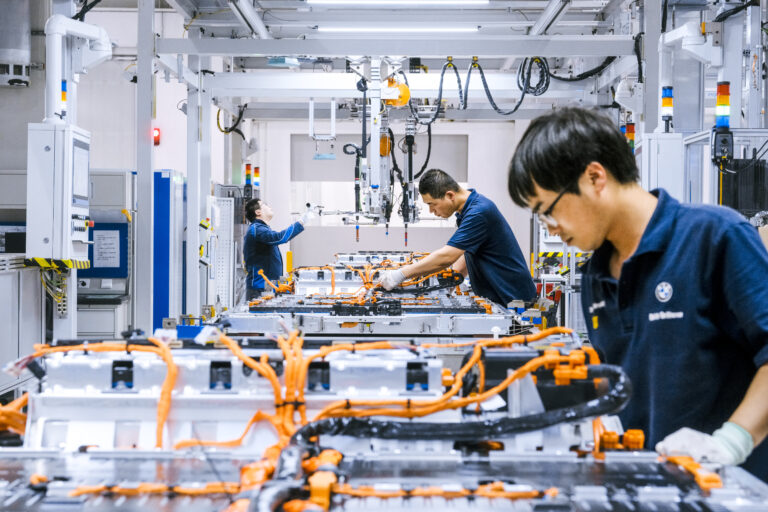
Date: December 20, 2024
In November, the combined effects of macroeconomic policies became more evident. The acceleration of export growth boosted industrial chains, while policies promoting large-scale equipment upgrades and consumer goods trade-ins bolstered manufacturing demand and investment. Infrastructure investment, though slightly decelerating, demonstrated resilience due to the effective execution of existing policies and the accelerated implementation of new measures. Concurrently, strengthened real estate support policies increased transaction volumes; nonetheless, achieving full stabilization requires further recovery in income expectations on the demand side. On the whole, macroeconomic policies are yielding tangible benefits, with key sectors exhibiting promising signs of recovery.
Economic Expansion Gains Further Momentum
In November, the Composite PMI Output Index remained steady at 50.8%, indicating sustained economic growth. The Manufacturing PMI increased to 50.3%, with the Production Index and New Orders Index rising to 52.4% and 50.8%, respectively. Notably, new orders returned to growth for the first time since May, indicating increased demand and market activity. However, the non-manufacturing sector saw mounting pressure as the Business Activity Index dipped to 50.0%. Service output growth moderated slightly to 6.1% year-on-year, down 0.2 percentage points from October.
Exports Remain Stable Amid Fluctuations
From January to November, goods exports increased by 6.7% year-on-year, aligning with the January–October growth rate, indicating strong overall resilience. While November's growth rate decreased by 6 percentage points to 6.7%, it remained among the highest levels this year. Key drivers were front-loading effects and sustained strong demand from the U.S. and ASEAN markets, with U.S. exports surpassing those to Europe. Holiday demand for toys and communication equipment notably enhanced U.S. export growth. However, the EU’s tariffs on electric vehicles tempered gains in the automotive supply chain.
Manufacturing Drives Steady Industrial Growth
From January to November, large-scale industrial output increased 5.8% year-on-year, with November seeing an acceleration of 5.4%. Manufacturing increased by 6.0%, marking its third consecutive month of growth and solidifying its position as the primary driver. Conversely, mining and utilities experienced a slight slowdown from the previous month. Policies promoting new technologies and emerging industries stimulated rapid growth in shipbuilding, smart consumer devices, and lithium battery production. Incentives for new energy vehicles and home appliance upgrades further boosted output. In November, export delivery value increased 7.4% year-on-year, representing the highest monthly growth since August 2022 and providing a strong boost to industrial chains.
Investment Growth Eases Slightly Despite Policy Support
Investment increased 3.3% year-on-year from January to November, with monthly growth decelerating to 2.4% in November. Infrastructure investment slightly decelerated to 4.2%, whereas manufacturing investment maintained a strong pace of 9.3%. Real estate investment declined further to -11.5%, but property sales recorded positive monthly growth for the first time since April 2023, increasing developers' funding sources. Transportation and storage investment declined sharply, whereas gains in power and water infrastructure provided significant support.
Multiple Measures to Bolster and Sustain Consumption Growth
Consumption continued to recover steadily as policies such as trade-ins for new products further stimulated consumer demand, resulting in strong sales across most categories. From January to November, retail sales increased 3.5% year-on-year, maintaining the same pace as the previous period. In November, retail sales grew 3.0%, seeing a slight moderation attributed to early "Double 11" promotions and a strong comparison base from last year. Policies promoting product upgrades led to significant growth in auto and furniture sales, which increased by 6.6% and 10.5%, respectively. Construction and renovation materials saw a resurgence, recording a 2.9% increase. Service-related retail sales also sustained a robust upward trend under the influence of various consumption-boosting measures.
Domestic Prices Gradually Return to Stable Levels
In November, coordinated policies boosted industrial recovery, resulting in a shift in the Producer Price Index from decline to slight monthly growth, reducing its year-on-year shrinkage by 0.4 percentage points. Prices in key sectors, including petroleum extraction, chemicals, and electricity, experienced minor reductions. On the Consumer Price Index (CPI) front, food prices dropped 2.7% month-on-month, markedly above the seasonal average decline over the past decade, mainly attributable to abnormal weather that enhanced agricultural production and logistics. This resulted in a month-on-month decrease of 0.6% in the overall CPI. Non-food prices also fell by 0.1%, indicating weaker demand for travel during the off-season. The decrease in food prices contributed to a moderation in the year-on-year CPI increase, which eased to 1.0%.
Navigating Economic Downturn - Fiscal Expansion to Drive Money Creation and Policy Implementation

Date: Nov 20, 2024
In October, the economy experienced a broad-based recovery from the previous month's lows. This improvement was supported by the latest round of macro policies and a favorable shift in export dynamics. Export growth surged due to timing discrepancies, which, in turn, energized the export-linked industries. The push for equipment upgrades and consumer goods trade-ins buoyed manufacturing demand and investment. Infrastructure investment gained momentum as existing policies took effect and new ones accelerated. Real estate saw a lift in transaction volume due to supportive policies, but a sustained recovery will require improving consumer income expectations. To sum up, policymaking is about trade-offs; fiscal expansion is often more effective than monetary expansion in combating economic downturns. It's imperative to swiftly address the bottlenecks in policy implementation and loosen the reins on individuals to boost the economy.
The economy shows a comprehensive improvement from its recent lows. Key economic activity indicators rose in October compared to September. The manufacturing PMI, non-manufacturing business activity index, and the composite PMI output index increased to 50.1%, 50.2%, and 50.8%, respectively, signaling a broad-based economic upturn. All five major sub-indices for the manufacturing sector increased, and the service sector's business activity index ticked up by 0.2 percentage points to 50.1%, propelling the non-manufacturing business activity index higher. Service production surged 6.3% year-on-year, a yearly peak. A stock market trading boom in October drove the financial sector's production index up by 3.7 points to 10.2%, its highest level this year and a key growth driver. This also contributed to a 5.0% year-on-year increase in the national service sector production index for the January–October period.
Shipping schedule shifts spurred faster export growth. The export growth rate for October surged by 9.6 percentage points to 11.2% compared to September. This momentum propelled the year-to-date export growth rate to 6.7% through the month. Bucking the trend of a typical October lull, this year brought a noteworthy 1.8% increase in exports from the previous month, primarily attributed to typhoon disruptions that postponed some of September's exports to October, resulting in an unexpected year-on-year growth. On a country-specific basis, the export growth rates to major destinations rebounded.
Exports and policies keep industrial growth steady. From January to October, the value-added output of industrial enterprises above designated size rose by 5.8% year-on-year, unchanged from the first nine months. The manufacturing and mining sectors saw a pickup in production, while the utilities sector's growth eased to 5.4%. A resurgence in domestic demand improved the sales-to-production ratio, while the value of exports rose by 3.7% year-on-year. Policies on equipment renewal and consumer goods took effect: car production swung from negative to positive, and the output of new energy vehicles reached a record high. Production of charging piles surged by 25.2%, and industries such as smart consumer devices, shipbuilding, and battery manufacturing have shown substantial value-added growth. The production volumes of agricultural processing, excavating machinery, packaging equipment, and home electric heating appliances have all sustained double-digit growth rates.
Policy efforts keep investment growth on an even keel. From January to October, investment climbed 3.4% year-on-year, matching the pace set during the first nine months. The monthly manufacturing investment growth rate hit 9.9% thanks to large-scale equipment renewals, innovation, and industrial upgrading. Industry-wise, investment accelerated in sectors such as other transportation equipment, non-ferrous metals, food manufacturing, and chemicals. Infrastructure investment also accelerated year-on-year to 4.3%, the first increase since March. The real estate market experienced increased transaction activity, with the year-on-year decline in new commercial housing sales area and sales volume for January to October easing by 1.3 and 1.8 percentage points, respectively, compared to the January–September period. However, such improvement has not yet fed into increased investment.
Policies gave a marginal boost to consumption growth. In October, programs such as consumer goods trade-ins and the "Double 11" shopping spree fueled the year-on-year growth in retail sales, which climbed to 4.8%, up from September. Commodity retail sales growth reached 5%, driven by accelerated sales in home appliances, audio-visual equipment, cultural and office supplies, furniture, and automobiles at retail units above a certain threshold. Necessity consumption remained stable, and discretionary consumption showed modest gains. Auto retail experienced significant recovery, and the real estate chain surged, with the decline in retail sales of building and decoration materials narrowing. As a series of stimulus policies are gradually implemented and service supply is optimized, combined with holiday buzz, service spending is on a fast track.
Active regulation is steering prices towards stability. International crude oil prices dipped due to geopolitical factors, which, in turn, lowered prices in China's oil-related industries. Nevertheless, new policies appear to have revived demand for certain industrial goods, helping to curb the Producer Price Index's (PPI) monthly slide, which shrank by 0.5 percentage points month-on-month. Equipment manufacturing saw price drops due to global economic shifts and domestic sales promotion, slightly widening the PPI's year-on-year decline by 0.1 percentage point. Consumer Price Index (CPI) gains were modest in October, ticking up 0.3% year-on-year, a sign of stable prices overall. Non-food prices declined further by 0.1 percentage points, reflecting market dynamics, while food prices eased back to a 2.9% gain but continued trending upward.
The Executive Office of H.H. Sheikh Mohammed Bin Rashid Al Maktoum (TEO) Delegation Visited CDI

Date: Nov 29, 2024
On November 29, 2024, a delegation from The Executive Office of H.H. Sheikh Mohammed Bin Rashid Al Maktoum (TEO) visited CDI. The discussions focused on cultural exchange, tourism collaboration, and policy alignment, while highlighting significant opportunities for cooperation in trade, investment, technological innovation, and cultural initiatives. Both sides also reached consensus that Dubai and Shenzhen share similarities in their rapid economic growth and notable achievements. Both cities are actively advancing efforts to further engage with the international community.
President Fan Gang Spoke at the 2024 Global Chinese Economic and Technology Summit

Date: Nov 26 2024
The 2024 Global Chinese Economic and Technology (GCET) Summit was held on November 26, 2024, in Phnom Penh, Cambodia. The event was organized by the KSI Strategic Institute for Asia Pacific and supported by the China Development Institute (CDI).
The world is facing growing economic and geopolitical uncertainties and challenges, impacting governments and business communities worldwide. Developing economies, including China and ASEAN nations, are especially vulnerable in these circumstances. In his opening speech, President of CDI Prof Fan Gang emphasized that, in order to overcome these difficulties and turn them into opportunities, closer international and regional cooperation, knowledge exchange, and collective action are essential.
The summit was attended by His Excellency Hun Manet, Prime Minister of Cambodia; His Excellency Dr. Aun Pornmoniroth, Deputy Prime Minister and Minister of Economy and Finance of Cambodia; and His Excellency Wang Wenbin, Ambassador of China to Cambodia. Government, business, and thought leaders were gathered together to discuss how China and ASEAN countries could collaborate to foster responsible policies, promote trade and investment, and advance scientific and technological innovation.
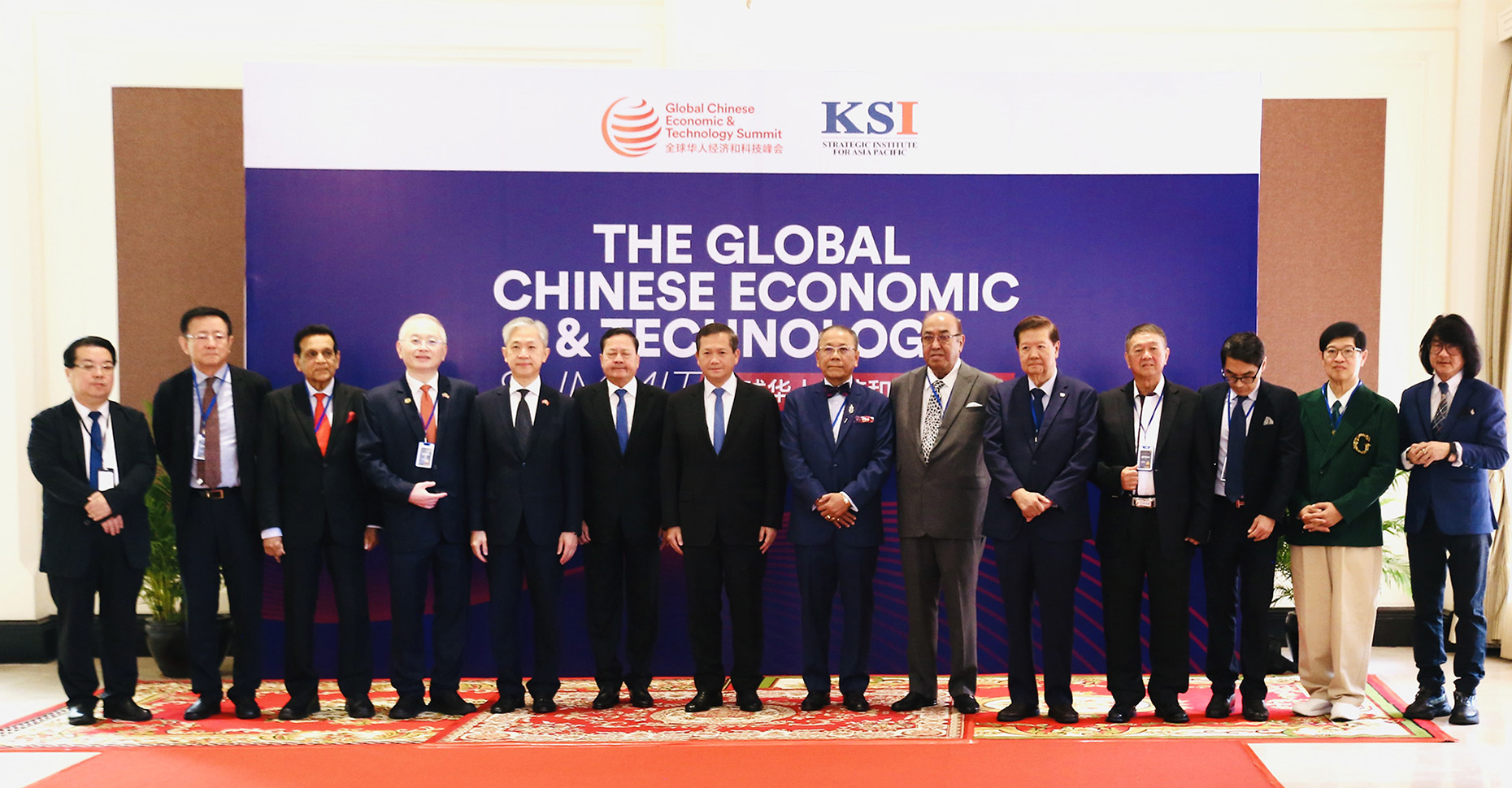
Reversing Economic Downward Spiral, Swift and Targeted Action Needed
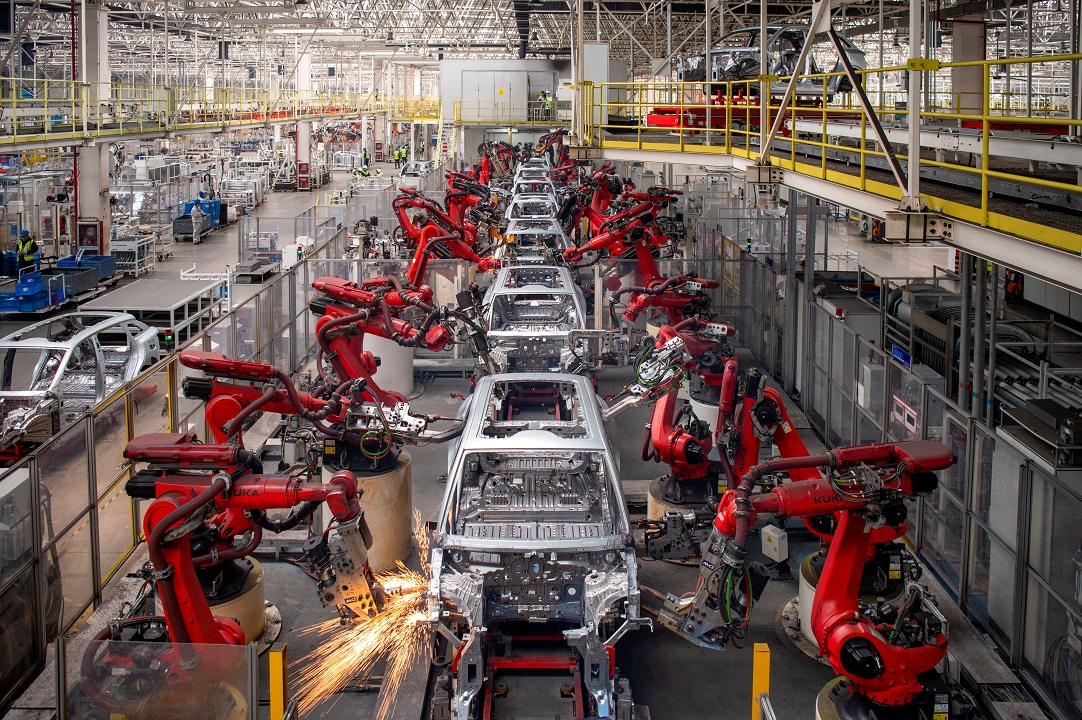
Date: October 20, 2024
During the first three quarters of 2024, a slowdown in overseas demand and increasing uncertainties contributed to a deceleration in year-on-year export growth compared to the first half of the year. Nonetheless, exports continued to drive the development of related industries within the industrial supply chain. The demand and investment in manufacturing were bolstered by policies encouraging large-scale equipment renewals and consumer trade-ins for new products. Additionally, the pace of implementation of infrastructure project reserves increased. Despite existing challenges, China's economic growth rate of 4.8% during the first three quarters still ranks among the top globally. Yet, insufficient demand remains the most significant challenge. This is further exacerbated by the negative growth in public budget revenues and an increased decline in M1 money supply, together signaling a persistent negative economic spiral. To break this cycle and foster a refined economic structure, it is imperative to swiftly implement "macro-micro easing" policies.
Economic factors contributing to an upward economic trend are on the rise. In the first three quarters, the GDP grew by 4.8% year-on-year, a slight deceleration of 0.2 percentage points from the first half of the year. The GDP for the third quarter alone increased by 4.6% year-on-year, marking a 0.1 percentage point decrease from the second quarter. The primary, secondary, and tertiary sectors experienced year-on-year growth rates of 3.2%, 4.6%, and 4.8%, respectively. The manufacturing PMI rebounded to 49.8% in September, with the production index increasing above the critical point for the first time in a month. Concurrent with these trends, the Chinese economy has exhibited several positive developments during the first three quarters. These include the high-tech manufacturing sector consistently outpacing the overall industrial growth rate, a noteworthy pickup in the growth of the service industry, and a steadying growth rate among real estate development investments. These encouraging signs indicate an underlying resilience and dynamism within the economy, suggesting that it remains on a steady course despite broader economic challenges.
A multitude of factors influenced the growth rate of exports. In the first three quarters, exports increased by 6.2% year-on-year, a deceleration of 0.7 percentage points compared with the first half of the year. This trend continued into September, when exports only increased by 1.6% year-on-year, the smallest increase since February 2024. The ongoing decline in the global manufacturing PMI has had a ripple effect, decreasing new export orders to 47.5% in September. Additionally, the above-average number of intense typhoons has further disrupted export shipping activities, exacerbating this situation. Overseas uncertainties, including ongoing trade frictions and the unpredictability of the US election, coupled with negotiations with American dockworkers on the East Coast, have advanced the peak season's arrival. Furthermore, the EU's implementation of anti-subsidy tariffs has led to a cumulative 0.5 percentage point decrease in overall exports compared to the previous month.
Exports supported the stability of related industries. During the first three quarters, the output of industrial enterprises above the designated size increased by 5.8% year-on-year, a rate consistent with the January-August period. It then showed a slight deceleration of 0.2 percentage points from the first half of the year. Additionally, the manufacturing sector saw its growth ease to 6.0%. After four consecutive months of decline, the year-on-year growth rate for industrial enterprises above the designated size rebounded to 5.4% in September. The effect of exports on industrial growth is notable, with the export delivery value of industrial enterprises above the designated size increasing by 4.1% year-on-year during the first three quarters, showing an accelerating trend quarter by quarter. This has spurred significant double-digit year-on-year growth in the export delivery values for export-related manufacturing sectors, such as the automotive, metal products, railway, shipbuilding, aerospace, and aviation industries.
The foundation for an upward trend in investment requires further strengthening. During the first three quarters, the year-on-year growth of total investment was 3.4%, easing by 0.5 percentage points from the first half. Within this change, manufacturing investment saw a year-on-year increase to 9.2%, infrastructure investment slowed to 4.1%, and real estate development investment shrank by 10.1%. In September, investment rebounded with a year-on-year increase of 3.4%, with all three main categories showing higher growth rates than in the previous month, signaling a marginal improvement in investment momentum. Manufacturing investment for September rose by 9.7% year-on-year, with notable acceleration in the textile, general equipment, agricultural and sideline food products, and pharmaceutical manufacturing industries, increasing by 6.3, 7.4, 7.7, and 7.2 percentage points, respectively, compared to the previous month. The other transportation equipment sector saw a substantial year-on-year increase of 37.9%. Infrastructure investment, supported by intensified fiscal measures and faster policy implementation, showed a significant rebound, with all sectors posting higher year-on-year growth rates than in the previous month. The cumulative year-on-year growth of infrastructure investment, including electricity, increased by 1.4 percentage points compared to the previous month, indicating that power sector investment was a key driver in the infrastructure rebound.
Overall consumer spending growth has been weakening amidst fluctuations. Consumer spending growth has been fluctuating and generally weakening. For the first three quarters, the year-on-year increase in total retail sales was 3.3%, a 0.4 percentage point reduction from the first half of the year. In September, the growth rate of total retail sales increased to 3.2%, influenced by the effectiveness of trade-in policies and a low comparative base from the previous year. Commodity retail sales saw a year-on-year increase of 3.3%, with sales by larger retailers increasing by 2.8%, indicating a return to positive growth. Essential and discretionary consumer spending remained robust, while the real estate-related consumption chain saw a notable recovery. Localized efforts to enhance trade-in policies have boosted sales of automobiles, home appliances, and related products. However, service consumption showed signs of weakening. From January to September, the cumulative year-on-year growth rate of service retail sales slowed to 6.7% compared to the January–August period, and the year-on-year growth rate of catering income fell to 3.1% in September.
The Producer Price Index (PPI) is anticipated to decrease further in its year-on-year decline. For the first three quarters, the PPI decreased by 2.0% year-on-year, which is a slight improvement of 0.1 percentage points from the first half. In September alone, the PPI decreased by 2.8% year-on-year, a worsening of 1.0 percentage point from August. International factors have led to a slowdown in price increases for industries associated with oil and non-ferrous metals. The real estate market continues to adjust, and prices in related industries such as steel and cement have been weak. Meanwhile, the Consumer Price Index (CPI) for the first three quarters increased by 0.3% year-on-year, expanding by 0.2 percentage points from the first half. This was mainly due to increases in non-food prices. With additional policies pending and the gradual implementation of existing measures, the PPI's upward momentum is expected to regain strength. This could lead to further narrowing of the PPI's year-on-year decline, not only in October but also throughout the fourth quarter.
Heightened Vigilance Required Against Economic Downward Spiral
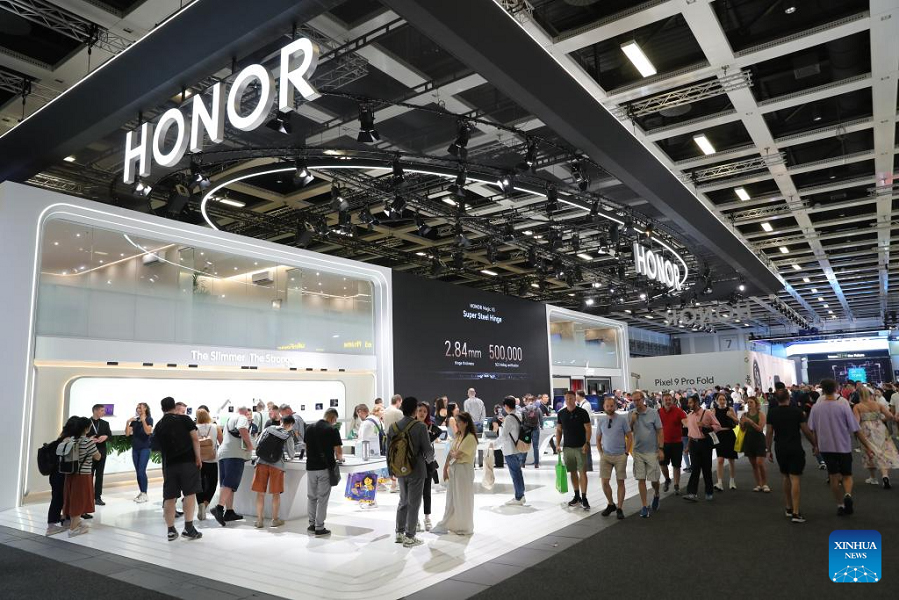
Date: August 20, 2024
Export growth recovered in August, and policy support bolstered manufacturing investment. However, growth in infrastructure investment and physical work volume were supressed. As real estate policies have been implemented, more measures are expected to boost market confidence. Consumer spending growth has slowed, with industrial and consumer goods prices remaining low. Public budget revenues and monthly consumption in top-tier cities fell, the decline in M1 money supply widened, and urban surveyed unemployment rates rose beyond seasonal patterns—all pointing to economic weakening compared to July. It is critical to resolve the issues at the next stage underlying the economic and non-economic mechanisms causing this slowdown, to balance growth speed and quality, and to emphasize the impact of the economic performance on public well-being and external cooperation.
Be vigilant against the economic downward spiral. In August, the composite PMI output index dropped by 0.1 percentage points to 50.1%, its lowest since January 2023, with the manufacturing PMI down 0.3 points, being the main drag. Key sub-indices, such as production and new orders, remained below critical levels and worsened than the previous months, indicating a worsening contraction cycle in manufacturing, characterized by "weakened new orders–reduced production–shrinking raw material inventories–weakening employment–and delayed deliveries." While the non-manufacturing business activity index saw a slight rise, driven by the services sector, other indicators remained generally sluggish.
Specific industries contributed to a rebound in export growth. Exports increased by 1.7 percentage points month-on-month in August, reaching 8.7%, the highest since March 2023. This was partly due to delayed shipments caused by typhoon disruptions in late July, which moved some goods initially scheduled for export in July into August. Additionally, the peak season for consumer electronics restocking and the launch of new products resulted in a rise in exports, further boosted by demand spurred by the application of AI. Consequently, smartphone exports climbed to 16.9%, contributing 0.6 percentage points to overall export growth.
Exports supported the stability of related industries. Although the year-on-year growth rate of industrial enterprises above the designated size dipped to 4.5% in August owing to a higher base of the same period last year, the two-year average growth accelerated to 4.5%. Among the three major categories, the manufacturing and mining industries saw decelerated growth, whereas the growth rate of electricity, thermal power, gas, and water production and supply industries accelerated to 6.8%. The mining sector’s slowdown indicates a deceleration in upstream inventory replenishment. Export-linked industries continued to perform well, with export deliveries in sectors such as automotive and general equipment maintaining double-digit growth.
Multiple factors continued to impede investment growth. From January to August, investment growth slowed by 0.2 percentage points to 3.4% compared to January–July, with total private investment plummeting to -0.2%. Breaking it down into three major categories: infrastructure investment growth slowed by 0.5 percentage points, manufacturing investment growth slowed by 0.2 percentage points, and real estate development investment maintained the same decline. Infrastructure was the main drag on the deceleration of investment growth, possibly due to extreme heat and rainfall disrupting construction activities as well as the slow implementation of funded projects. However, from January to August, investment in high-tech manufacturing was 0.5 percentage points higher than the overall manufacturing sector, driven by large-scale equipment renewals, which saw equipment purchase investments surge by 16.8%.
Consumption weakens as low base effects fade. In August, total retail sales of consumer goods increased by 2.1% year-on-year, down 0.6 points from the previous month. Commodity retail sales fell 1.9%, whereas summer travel helped boost catering revenues by 3.3%. However, slower residents' income growth resulted in weaker retail sales growth in both urban and rural areas.
More measures are required to stabilize prices. In August, affected by insufficient market demand and the downward trend in prices of several bulk commodities, production material prices in energy-intensive industries weakened, resulting in a month-on-month and year-on-year decline in the Producer Price Index (PPI). The expanding drop in PPI structurally dragged down the Consumer Price Index (CPI). However, disturbances such as high temperatures and rainy weather pushed the CPI up by 0.6% year-on-year, with food prices driving the increase. Among them, the rise in prices of fresh vegetables and fruits was the primary driver.
2024 Shenzhen Hong Kong Cooperation Forum
Information
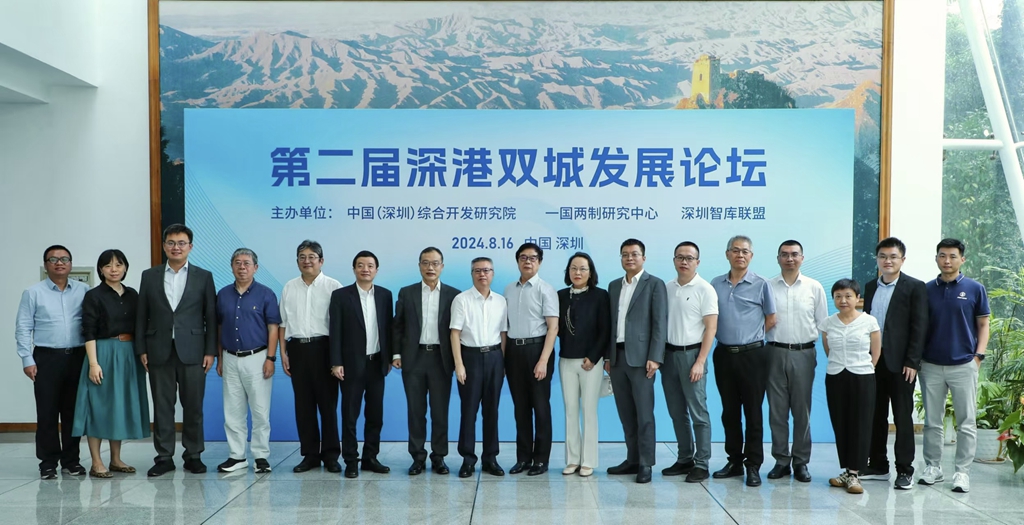
Information
Shenzhen and Hong Kong are the “Twin Stars” of the Guangdong-Hong Kong-Macao Greater Bay Area. Hong Kong is a highly advanced international financial center, while Shenzhen has comprehensive science and technology ecosystem. How can these two cities leverage their unique strengths to foster development and cultivate new quality productive forces? The two cities are presented with a shared prospect and opportunity amidst this new developmental stage.
On August 16, 2024, China Development Institute, One Country Two Systems Research Institute, and the Shenzhen Think Tank Alliance co-hosted the "2024 Shenzhen Hong Kong Cooperation Forum". The forum gathered experts and scholars from both Shenzhen and Hong Kong to discuss how to use technological innovation as a breakthrough to build Shenzhen and Hong Kong into a metropolis with greater international influence.
Date: August 16, 2024
Hosts: China Development Institute, One Country Two Systems Research Institute, Shenzhen Think Tank Alliance
Venue: China Development Institute

